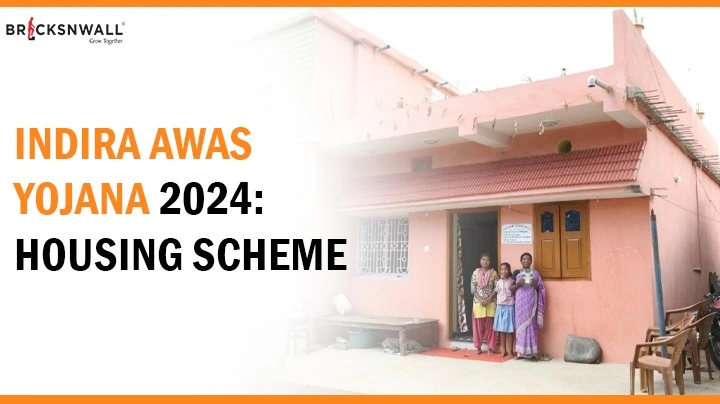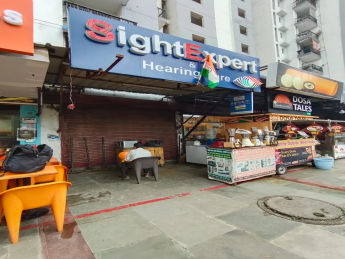Indira Awas Yojana 2024 | Housing scheme
Bricksnwall Trusted Experts

The Ministry of Rural Development introduced the Rural Landless
Employment Guarantee Programme (RLEGP), which includes the Indira Awaas Yojana
(IAY) sub-scheme. The primary goal of the Indira Awaas Yojana is to give funds
for the construction of homes to people who belong to the Scheduled Caste (SC)
or Scheduled Tribes (ST), have been released from bonded labor, or are not in
the SC or ST category but are below the poverty level. We examine the Indira
Awaas Yojana (IAY) in-depth in this post.
Goals
The following is a list of the Indira Awaas Yojana's goals:
- to
offer assistance while dwellings are being built in rural locations.
- To support the development of dwellings with suitable provisions, including workplaces within the house.
- To
design the houses based on the necessities of the dweller.
- To promote the use of technology and material that is economical, conductive for producing employment, environment-friendly and sustainable.
- to provide Panchayats more authority and motivate them to take the initiative in implementing this housing program at the village level.
Important Elements
The following are the Indira Awaas Yojana's (IAY) key characteristics:
Cooperative Ownership
With the exception of single, widowed, or divorced people, husband and
wife will jointly own the homes granted under the Indira Awaas Yojana (IAY).
Building
The beneficiary should be responsible for building the residences. Under
IAY, contractors shouldn't be engaged in the building of homes. In the event
that the beneficiary has designated a contractor, the State Government will
take the money expended on that contractor.
Technical Assistance
Technical and administrative direction is given to facilitate the
building of the IAY dwelling. Additionally, to give the recipients essential
service assistance, reputable NGOs, philanthropic organizations, and youth
clubs might be enlisted in their services.
Standards for Design and Construction
In order to provide slums with social infrastructure utilities including
street lighting, sewage, drainage, internal and approach roads, water supply,
and street lighting, the State Government promotes eco-friendly housing
solutions.
Goal Audience
The target category consists of households determined by a village's
Gram Sabha to be below the Poverty Line (BPL). Women-headed households, SC/ST
individuals, non-SC/ST rural households below the poverty line, widows,
ex-servicemen, disabled individuals, released bonded laborers, and marginalized
groups within society would all receive help from the Central Government.
IAY's Special Projects
The Central Government would grant funding for exceptional projects
started for the following reasons under the Indira Awaas Yojana (IAY):
Rehabilitation of rural families below the poverty level.
to give weaker tribal societies a place to settle.
rehabilitation for people with ailments related to their jobs.
Families covered by the Scheduled Tribes and Other Traditional Forest
Dwellers Act are settled.
Settlement of households that are obliged to relocate from districts.
a display of cutting-edge technology with an emphasis on accessible and
environmentally responsible options.
Finance and Fund Distribution
The state and central Governments would split the money that were
released to the recipients in a 75:25 price-sharing ratio, excluding projects
in the Union Territories and the Northeast. Thus, 90% of the funding for
projects in the Union Territories and North-East areas must come from the
Central Government.
The following table shows the money that the State and Federal
governments have allotted to the recipients, with the exception of the
Northeast and Utah:
S.No - Fund Allocated for the Beneficiary Category
1. 60% of SC/ST Category
2. 15% of the population is a minority
3. Persons with disabilities: 3%
Note: If any of the beneficiaries do not fall under the category listed
above, then the District Collector or Zilla Parishad should certify the same
and make appropriate adjustments in the official portal (Awaas Soft). The
following is the breakdown of the funds allocated:
90% of the funds allotted to this program will be used for additional
expenses as well as the purchase of furnishings for new homes and home
upgrades.
The remaining 5% of the budget will be allocated to the Indira Awaas
Yojana's (IAY) special projects.
The following criteria will determine how the funds are distributed by
the Ministry of Rural Development:
The lack of housing in rural areas is given first priority, followed by
those who fall under the Below Poverty Line (BPL) category.
The families that fall under the BPL category might have their kutcha dwellings upgraded with 20% aid
Execution of the Plan
The plan's implementation is under the jurisdiction of the
district-level Zila Parishad; if there isn't a Zila Parishad in the state, the
relevant government should assume responsibility.
On the other hand, the village panchayats are in charge of carrying out
the rules established by the Indira Awaas Yojana (IAY) locally. In the event
that a State does not have a village panchayat, the relevant authority that is
comparable to one is in charge. The state government may delegate the
intermediate-level function to the panchayat if the village panchayats are
unable to complete the assignment.
Strong Committee
The Chairperson of the Empowered Committee will either be the Secretary of Rural Development or an Additional Secretary. Additionally, it will be composed of the state secretary of rural housing, the joint secretary of rural housing, a representative from HUDCO, a planning commission adviser, a representative from the knowledge network, and representatives from NGOs involved in the building industry. This committee will decide on things like new home construction goals, cash payment authorization, budget reallocation, approval of new technologies for construction, special project approval, and scheme monitoring.
Fund Release
- There
will be two installments for the fund's annual allocation.
- The
sanction letter is sent with the first installment, which amounts to 25%
of the project's total cost.
- After the project reaches the level of the lintel, the beneficiary receives the second installment, which is 60% of the project cost, and the last installment, which is 15% of the project cost, upon project completion.
How to Release the First Instalment
Those who took the second installment in the prior year would be
eligible to receive the first installment. Fund Disbursement
- The
fund's annual allotment will be disbursed in two installments.
- Accompanied
by the sanction letter comes the first installment, which amounts to 25%
of the project cost.
- Upon reaching the level of the lintel, the beneficiary receives the second installment of 60% of the project cost, and upon project completion, the beneficiary receives the final installment of 15% of the project cost.
Process for First Instalment Release
- For
those who took the second installment in the prior year, the first
installment would be released.
- The
proposals for the first installment and the supporting documentation
required for the release of the second installment of the previous year
must be submitted by the districts that have not yet received the second
installment.
Procedure for Second Instalment Release
The following requirements must be met before the fund is released:
- During
the fiscal year, sixty percent of the fund is used.
- It
is necessary to provide evidence that 100% of the approved homes have been
completed within three years of the approval date.
- Proof of the completion of 75% of the authorized houses must be obtained in the event of a two-year period.
Reimbursement to Affected Parties
The postal service or a bank account are used to make the beneficiary
payments. To transfer the credit directly using the e-FMS module, the
beneficiary's information, including their account number and radar number,
must be registered on the site. Every payment made to the recipients will be
visible on the portal, allowing users to monitor the amount and status of
expenditures at the district level.
Observing
The Indira Awaas Yojana officials responsible for this are in charge of
the methodical monitoring system. Monthly assessments and annual reports are
required as part of this monitoring system, and local officers from the region
will visit the designated states and UT to ensure that the program is operating
according to its specific guidelines.




